Make your own Garden Pesto + Carrot Top, Dandelion and Lemon Balm Pesto recipe
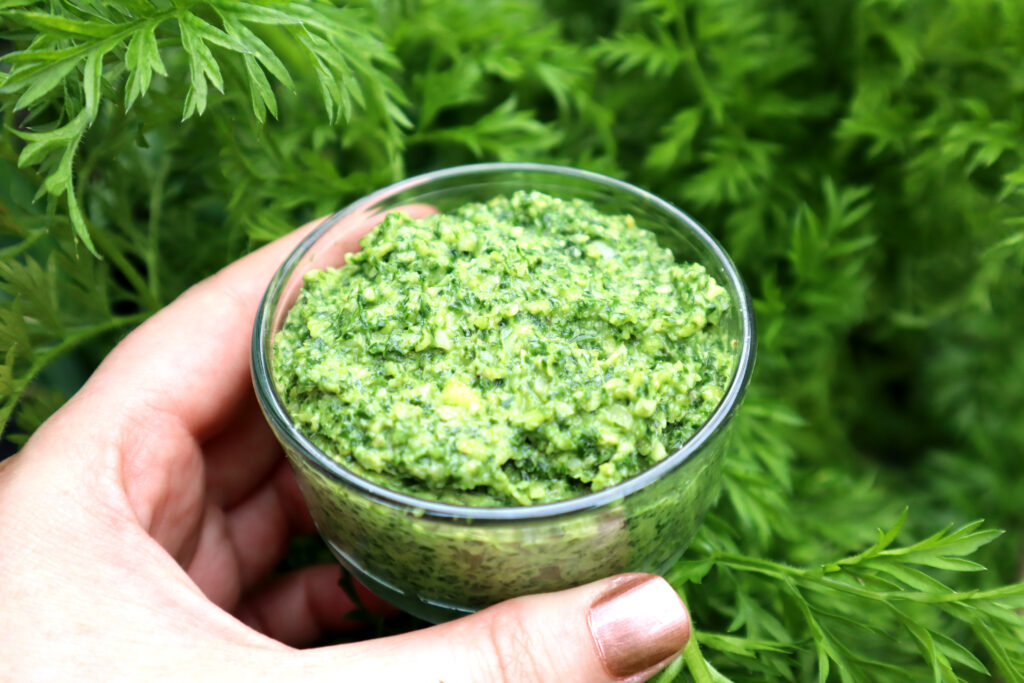
Did you know that pesto is really easy to make? Or that fresh pesto is far superior to the jar stuff? Did you know that you can make your own pesto out of pretty much any combination of leafy greens and/or soft herbs?! You read that right, you totally can!
Obviously fresh homemade basil pesto is one of the best things on earth, but unfortunately fresh basil is limited to the summer months (unless you buy the exorbitantly expensive out of season stuff from the supermarket).
The good news is that with a little bit of resourceful creative thinking, you can make your own seasonal fresh pesto whenever you want it!
Garden pesto is a great way to embrace seasonal eating, because the idea is to use what you have available in the garden at the time.
It’s also a great way to use plants which are starting to bolt or need pruning, so it can also help to reduce food waste.
Some of our favorite non-basil pestos are rocket (super peppery), parsley, coriander, and foraged wild garlic/three cornered leek. You can even use things like fresh peas or broadbeans and spring onions.
Pesto is also a fantastic way to incoporate highly nutritious foraged edible weeds like dandelion or chickweed into your diet!
The process for making pesto is always the same, regardless of the specific ingredients you choose.
I’m including my Garden Pesto master recipe so you can experiment to your heart’s content, as well as my food-waste-busting Carrot Top, Dandelion and Lemon Balm pesto recipe.
Garden Pesto master recipe
Gather the following:
A couple of big handfuls of your chosen grden greens/herbs, washed and drained.
Olive oil for blending (we tend to use light olive oil for a milder flavour, or a combination of light and extra virgin – depending on the flavour profile of the other ingredients)
A small handfull of toasted pine nuts (or other nuts, eg cashews go well with coriander pesto, and some people like walnuts in pesto – I’m not one of them!)
A good handful of shredded or shaved parmesan (other hard cheeses like romano or peccorino also work – just use what you have on hand)
A couple of cloves of garlic, peeled and roughly chopped.
Salt
Lemon juice (optional)
Note: I don’t give specific quantities because it really is a matter of personal taste, and the specific ingredients you use will also determine the quantities needed to find the right balance of flavours.
Method
Put your chosen leafy greens/herbs into a food processor or blender. Add garlic, a decent pinch of salt and a few glugs of olive oil.
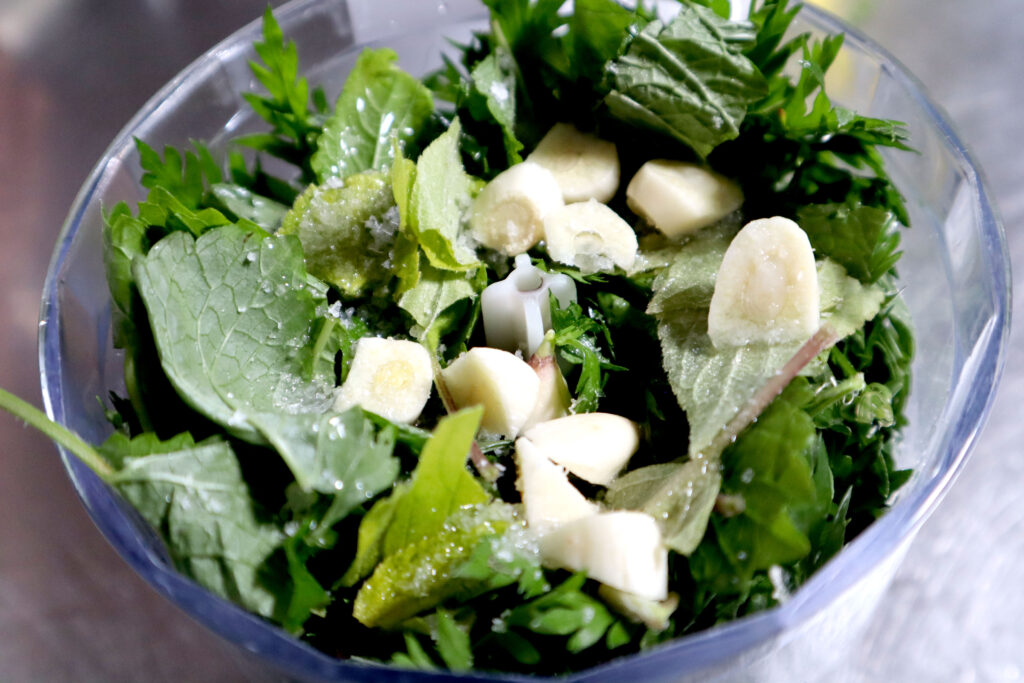
Blend until everything is broken up but still chunky.
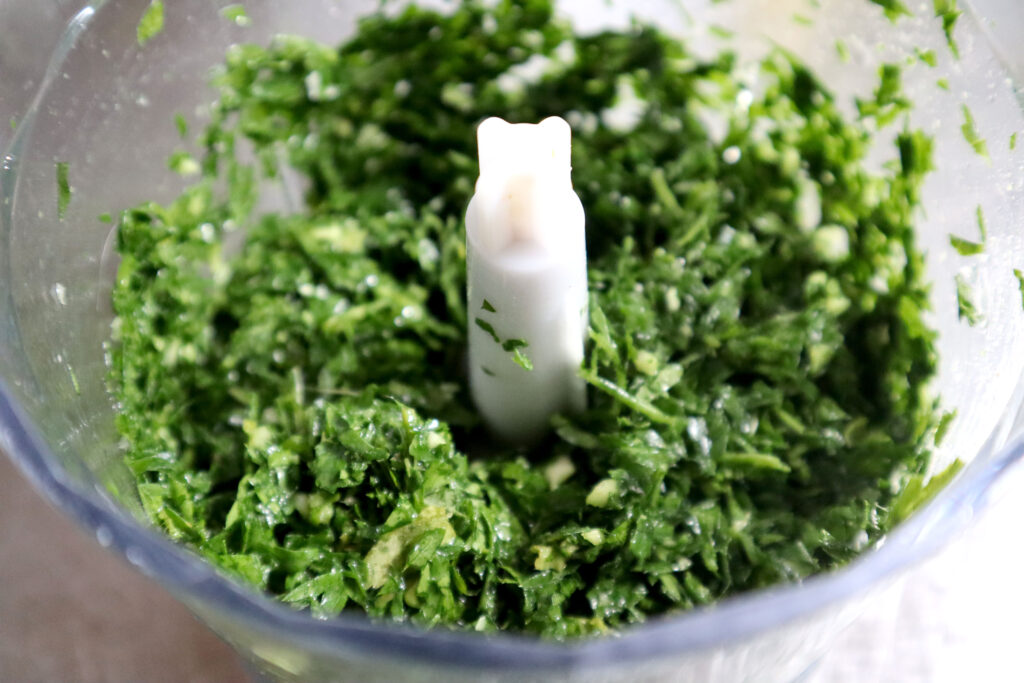
Add nuts and parmesan and a few more glugs of olive oil.
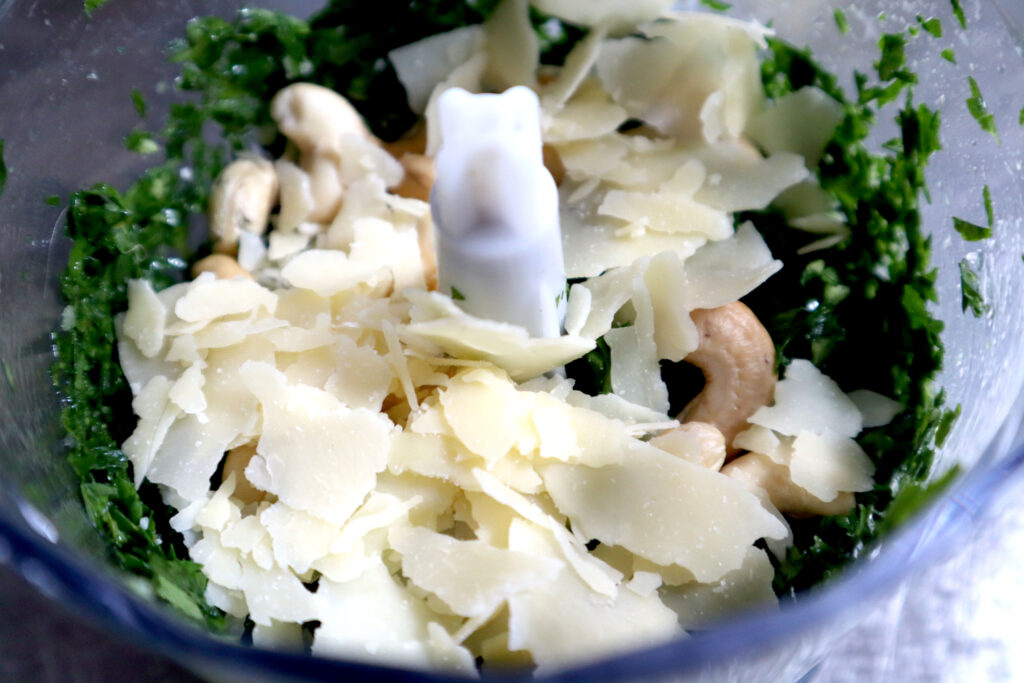
Blend until well combined, but not a smooth paste.
Check flavours, add more garlic or cheese if needed. Check seasoning, add more salt if needed. Add lemon juice if desired (this goes really well in rocket pesto).
Lastly add enough olive oil so that it’s a fairly loose paste, but not runny.
Transfer to a clean container, cover and chill in the fridge for an hour or so to allow the flavours to consolidate before using.
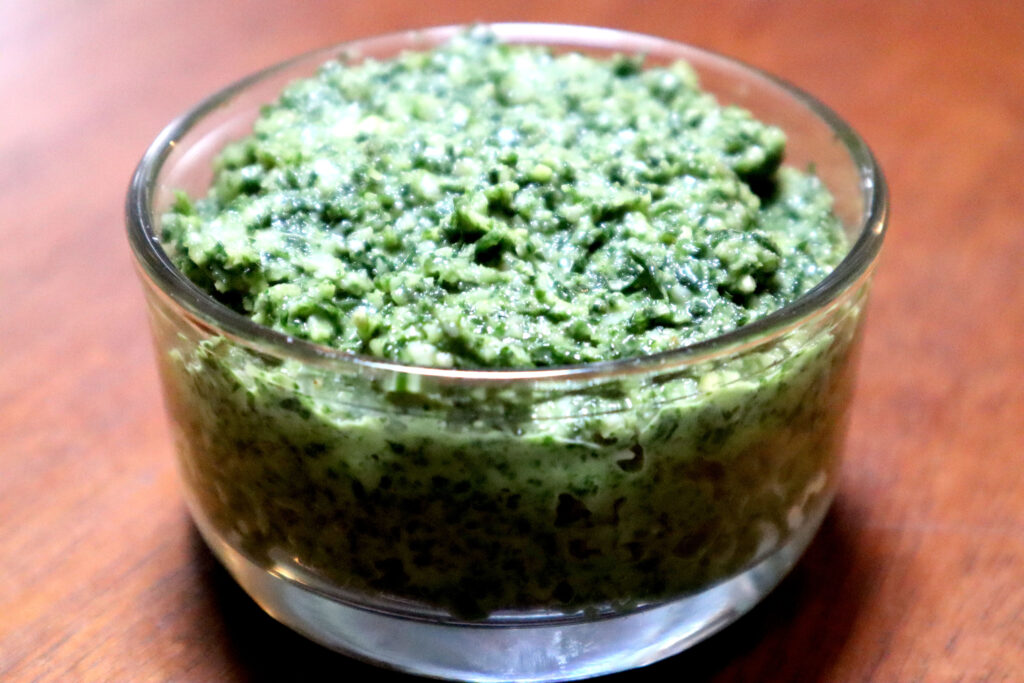
If you’re not planning on using the pesto that day, smooth the top flat and cover with a bit more olive oil. It will keep longer this way. You should try to use it within three days.
You can also freeze pesto if you can’t use it up in time. Just pop spoonfuls into an ice cube tray, freeze overnight, then turn out and place in a ziplock bag or container in the freezer. Take them out as needed.
This is great for making a quick pasta, just throw some pesto cubes into hot pasta and use a couple of spoonfulls of the pasta cooking water to make it saucy.
Then add whatever bits and pieces you have lying around in the fridge. We like to add haloumi, broccoli, rocket, bacon and cherry tomatoes in warmer weather, and mix in a dollop of cream for a richer sauce in colder weather.
You can also thaw a cube or two as a garnish to brighten up winter soups. It’s especially great on top of homemade minestrone with Crunchy Herbed Croutons!
Carrot Top, Dandelion and Lemon Balm pesto recipe
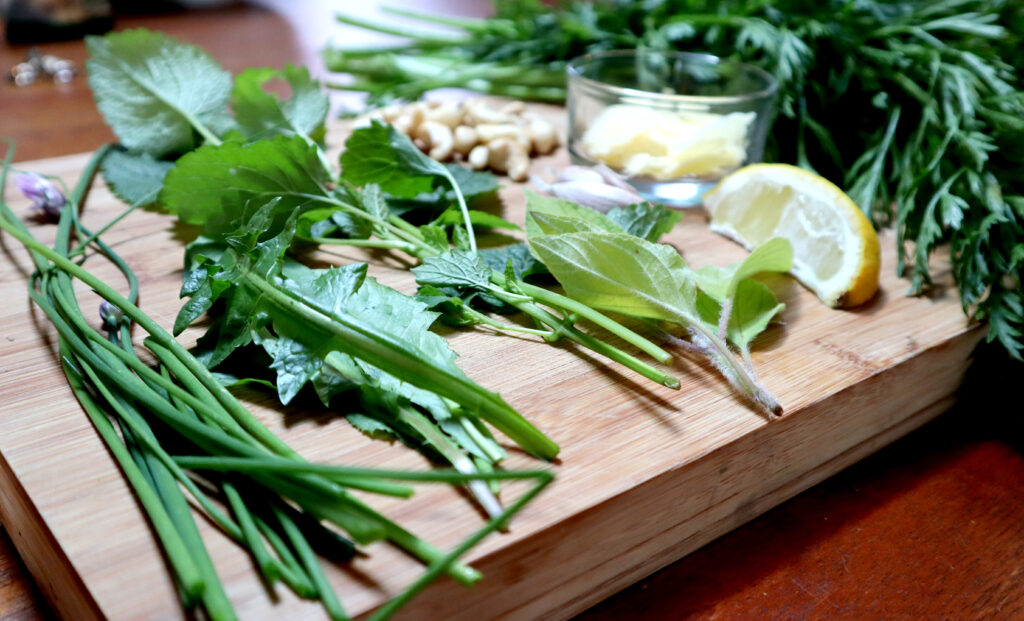
Gather the following:
Large bunch of carrot tops, washed (this is a great way to use carrot tops that have started to bolt, which is usually why we make it. You can also harvest some tops from still growing carrots, just be sure to leave plenty of greens for the carrots to photosynthesize)
Small handful of fresh chives, washed (you can also use garlic greens, spring onions or foraged wild garlic/three cornered leek)
Small handful of freshly foraged dandelion leaves, washed (stick to smaller, younger leaves to avoid bitterness. You can most likely find some in your backyard, but if not, be ssure the area you’re harvesting from is not near a busy road or contaminated by animal waste, runoff, pesticides, herbicides etc).
Small handful of pineapple sage, washed (if you have it, it’s not very common so you probably won’t be able to buy or forage it – don’t worry if you can’t find any, your pesto will still be delicious!)
Large handful of fresh lemon balm, washed (you could also subsitute lemon thyme to get the lemony flavour. The lemon balm is the hero flavour in this pesto, which is why the quantity is greater than the other herbs)
Small handfull of cashew nuts
Good handful of parmesan cheese
Light olive oil
Wedge of lemon
Pink Himalayan or sea salt (avoid table salt if you can, it contains aluminium and microplastics and is devoid of trace minerals)
Method
Follow the method described above for garden pesto
In conclusion
You can (and should) try making pesto out of any greens or soft herbs in your garden. It’s super easy and it packs a massive flavour punch. It can also be frozen and sored for later use.
Have fun and experiment as much as you like with different ingredient combinations and ratios. Just remember that it should have a very strong flavour, as it will usually be mixed into a large quantity of pasta which will dilute the flavour.
Don’t feel limited to serving it with pasta though! Mix with a little more olive oil for a tasty salad dressing, use as a marinade or sauce for grilled meat or kebabs, or spread on grilled sourdough or ciabatta for a delicious foccacia or bruschetta base.
Let me know if you liked my recipes! I’d love to see your garden pesto creations, snap a pic and tag me on Instagram @maddythemaker
Happy pesto making!
[optin-monster-inline slug=”qdfs5cowsxbtmmucnrtm”]